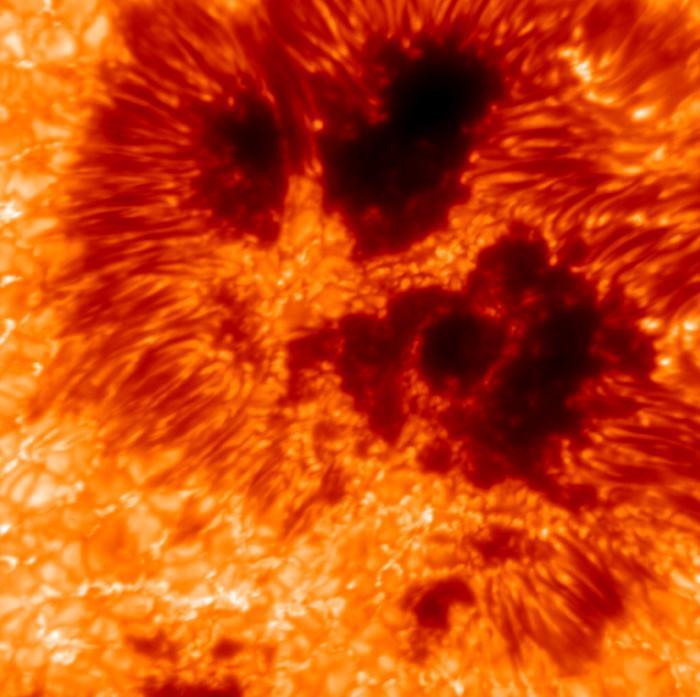
World’s largest solar telescope captures detailed photo of the Sun
The world has just gotten a whole lot closer to the Sun, thanks to a newly released image captured by the Daniel K Inouye Solar Telescope (DKIST) at the National Solar Observatory in Hawaii. The image, taken using the telescope’s new Visible Tunable Filter (VTF), shows the surface of the Sun in unprecedented detail, revealing a cluster of continent-sized dark sunspots near the centre of the Sun’s inner atmosphere.
The DKIST is the world’s largest solar telescope, and it has been designed to study the Sun’s magnetic field, which is responsible for the Sun’s incredible energy output. The telescope is equipped with cutting-edge technology, including the VTF, which is capable of capturing high-resolution images of the Sun’s surface with unprecedented precision.
The image released by the DKIST shows a stunning level of detail, with the sunspots appearing as dark patches on the surface of the Sun. These sunspots are actually cooler regions of the Sun’s surface, caused by intense magnetic activity that inhibits the convection of hot, ionized gas (plasma) near the surface. The sunspots are so large that they could swallow several Earths whole, and they play a crucial role in shaping the Sun’s magnetic field.
The DKIST’s VTF is capable of capturing images of the Sun’s surface with a resolution of 20 kilometers per pixel, which is incredibly high for a solar telescope. To put that into perspective, the Hubble Space Telescope, which is capable of capturing stunning images of the universe, has a resolution of around 100 kilometers per pixel.
The VTF works by using a combination of advanced optics and a sophisticated filtering system to isolate specific wavelengths of light emitted by the Sun. This allows the telescope to capture images of the Sun’s surface with unprecedented detail, revealing features that were previously invisible to astronomers.
The DKIST’s VTF has been designed to study the Sun’s magnetic field in unprecedented detail, which is crucial for understanding the Sun’s incredible energy output. The Sun’s magnetic field is responsible for solar flares, coronal mass ejections, and other dynamic events that can impact Earth’s magnetic field and upper atmosphere.
The DKIST is also equipped with a range of other advanced instruments, including a spectrometer that can analyze the Sun’s light in incredible detail. The spectrometer can detect subtle changes in the Sun’s light that are caused by the movement of magnetic fields and the heating of the Sun’s corona.
The DKIST is a major upgrade to the previous generation of solar telescopes, which were limited by their resolution and sensitivity. The new telescope is designed to be more powerful and flexible than its predecessors, allowing astronomers to study the Sun’s magnetic field in unprecedented detail.
The DKIST is also equipped with a range of advanced technologies, including a state-of-the-art control system that allows astronomers to adjust the telescope’s focus and alignment in real-time. The telescope is also equipped with advanced data analysis software that allows astronomers to process and analyze the vast amounts of data generated by the telescope.
The DKIST is a major achievement in solar astronomy, and it has the potential to revolutionize our understanding of the Sun and its impact on our planet. The telescope’s ability to capture high-resolution images of the Sun’s surface and study the Sun’s magnetic field in unprecedented detail will allow astronomers to better understand the Sun’s incredible energy output and its impact on our planet.
In conclusion, the DKIST’s new VTF has captured a stunning image of the Sun’s surface, revealing a cluster of continent-sized dark sunspots near the centre of the Sun’s inner atmosphere. The image is a testament to the DKIST’s incredible capabilities, and it marks a major milestone in the development of solar astronomy. The DKIST is a major achievement in solar astronomy, and it has the potential to revolutionize our understanding of the Sun and its impact on our planet.
News Source:






